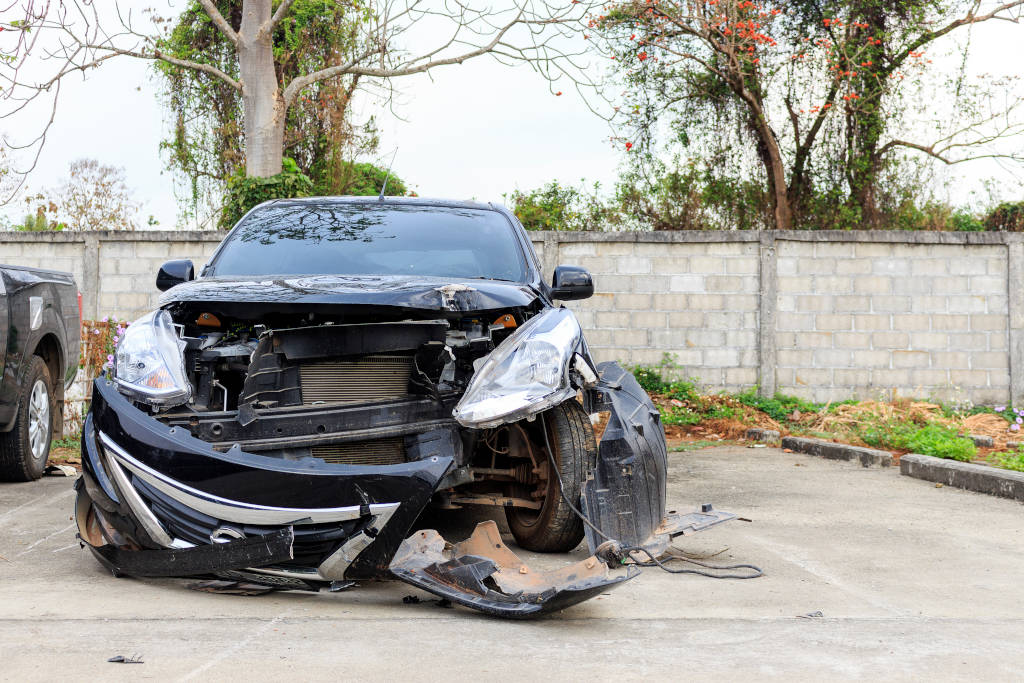Car insurance limits are the maximum your insurer will pay for each type of coverage on your policy. Limits are dollar amounts you choose for liability, collision, and comprehensive. Higher ones offer more financial protection, and lower ones protect you less. Higher limits, of course, cost more. And no one wants to overpay for insurance. Learning about limits will help you know how much coverage your car needs without exposing you to too much risk.
Going over your limits can cost you hundreds or even thousands in some cases. If you can know how high to set them, you can be in a great position to save lots of money.
This article will help you learn more about limits. We’ll go over:
- What they are
- How much insurance to get
- The difference between high and low limits
- The basics of minimum state requirements
- Comprehensive and collision coverage limits
Insurance Coverage Limit Basics
Limits are the highest amount of money that your insurance company will payout for your claim. If you exceed this number, you must pay out of pocket for any remaining expenses. No one wants that, especially when severe injuries occur resulting in hospital and rehabilitation bills.
Every individual type of auto insurance you buy comes with a limit. Below is a list of coverages with their own limits:
- Collision insurance. Collision pays for damages to your car if it’s involved in a crash with another vehicle or an object such as a tree. This coverage is optional and only covers the damages to your vehicle.
- Comprehensive insurance. Comprehensive covers damages to your vehicle from events out of your control such as theft or vandalism or falling trees. Like collision, this coverage is not required.
- Property damage liability (PDL). This pays for damages to other vehicles or property caused by your car. PDL is mandatory in 49 states, as well as in Washington D.C.
- Bodily injury liability (BIL). This helps cover the medical costs of anyone involved in an accident where you’re at fault. BIL also applies if another person drives your vehicle. Like PDL, BIL is mandatory in nearly every state.
- Personal injury protection (PIP). This pays for any medical bills or lost wages for you and your passengers. PIP is a required coverage in “no-fault” states.
- Uninsured/underinsured motorist (UM/UIM). The Insurance Information Institute (III) describes this as a “frequently required coverage.” UM/UIM covers the costs of an accident caused by someone with very little or no insurance.
High vs. Low Limits: How Much Coverage Do I Need?
At the very least, you must meet the minimum requirements in your home state. These regulations declare the minimum limits for each type of coverage on your policy. You can set them higher if you’d prefer more protection, but you must meet state law. Note that coverage requirements vary between states.
On your policy, you might see your limits written out in a shorthand form like this: “50/100/50.” Here’s a quick breakdown of how to read shorthand:
- $50,000 for injuries to one person in an accident
- $100,000 for injuries to everyone involved in an accident
- $50,000 for any property damage in an accident
Think about your circumstances before choosing your limits. You may think about personal details like where you live, how much you make, and more. The following is a rundown of high vs. low auto insurance limits and how you may go about choosing them:
High Limits
As previously mentioned, how high you set your limits relies on your personal and financial situation. You may want to have high limits if:
- You can afford to pay more. Most states have a minimum requirement for auto insurance. If you choose to have your limits higher than the minimum, you’ll probably have a more expensive premium.
- You live in a high-income city/town. The damages could be costly if you happen to be in an accident that involves expensive cars. Upping your limits ensures that your provider will pay for more of the damages than you.
- You have a new car. You may want both comprehensive and collision coverage if you’ve recently purchased a new vehicle. In fact, banks require full coverage until you pay off your loan. Adding these coverages and maintaining higher limits costs more, but they’ll protect your expensive new asset.
Low Limits
Having lower limits is a riskier choice. This is because you assume a lot more financial responsibility. For example, you could find yourself in an accident that causes damage to your car, or bodily harm to passengers. A lower amount of insurance in this situation means you’d pay at least a chunk of any wages lost, repairs, injuries, and more.
While risky, lower limits still might be a better choice if:
- You can afford to pay for some of the costs yourself. After an accident, you’ll have to pay for anything your auto coverage doesn’t cover. With lower limits, you must make sure you can cover those costs.
- You live in a lower average-income city/town. Car prices may be lower in cheaper areas. Therefore, accidents could be more affordable than in higher-income areas with likely more expensive cars.
- You rarely get into accidents. Lower limits might save you money if you consider yourself a safe driver. Higher limits could add up on your monthly premium, especially if you hardly need to use your auto coverage.
Though there are situations where you might think about using lower limits, higher limits are safer. It all comes down to how much you can pay if something unexpected happens. Like with deductibles, it’s smart to look at your emergency fund and figure out how much you can put up in an accident.
Minimum State Requirements
Every state, except New Hampshire and Virginia, requires drivers to have some level of liability coverage. And even though New Hampshire doesn’t require auto insurance by law, its Department of Safety “strongly recommends” it. Without coverage, you might have to shell out lots of money if you get into a crash.
You’ll find that each state sets unique limit requirements. What you may see in one state won’t be what you could in another.
Collision and Comprehensive Limits Should Equal Your ACV
Typically, your comprehensive or collision insurance limits are the same as your car’s actual cash value (ACV) when it’s in an accident. If your car is a total loss because of a crash or otherwise, your policy would cover your vehicle’s value while taking depreciation into account.
The ACV is the cost to repair or replace your damaged vehicle minus the depreciation. The ACV is also the fair market value of your vehicle.
Bottom Line
If your damages go above your coverage limits, you’ll pay out of pocket to cover the remaining costs. For that reason, it’s important to know how much you’re willing to pay in an emergency. As mentioned, almost every state has limit requirements. If you’re meeting those requirements, you have free rein to set your limits as low or as high as you want.
When you choose how much coverage to get, you should consider many important details such as your city, finances, and safety as a driver. And remember to compare quotes when shopping for insurance to get the lowest rate.
Frequently Asked Questions
What’s the definition of coverage limits?
Limits are the greatest amount of insurance coverage in dollars that your insurer will provide you. When damages exceed limits, you must pay the remainder out-of-pocket.
Do I need to set limits on my policy?
Yes, auto insurance coverages require limits. The only questions are how high or low you’d like them and how much you’d prefer to pay. Liability, collision, and comprehensive coverages each have individual limits. When you purchase them, you must decide how much you’d like.
How much insurance coverage do I need?
Deciding how much coverage to get is a personal choice that requires you to look at your circumstances. Some people tolerate risk more than others. It’s always better to have higher limits if you can afford them. But some people only want the cheapest insurance they can get. Be sure you meet your state’s minimum requirements when choosing your limits.
What happens if my damages exceed my limits?
If damages exceed limits, you must pay for any remaining costs out of pocket. Vehicle costs and medical expenses rise every year. Serious accident injuries rack up enormous hospital and car repair bills. The legal requirements set by most states are insufficient to cover severe damage and injuries from an accident. Keep this in mind when deciding on how much coverage to buy.
How high do my coverage limits need to be to comply with the law?
Every state has unique minimum requirements in terms of both coverages and their limits. Check your state or agent to find out how much auto insurance you must maintain to be legal.
What are the limits for collision and comprehensive coverage?
Limits for your comprehensive or collision will usually be the same as your car’s actual cash value.


